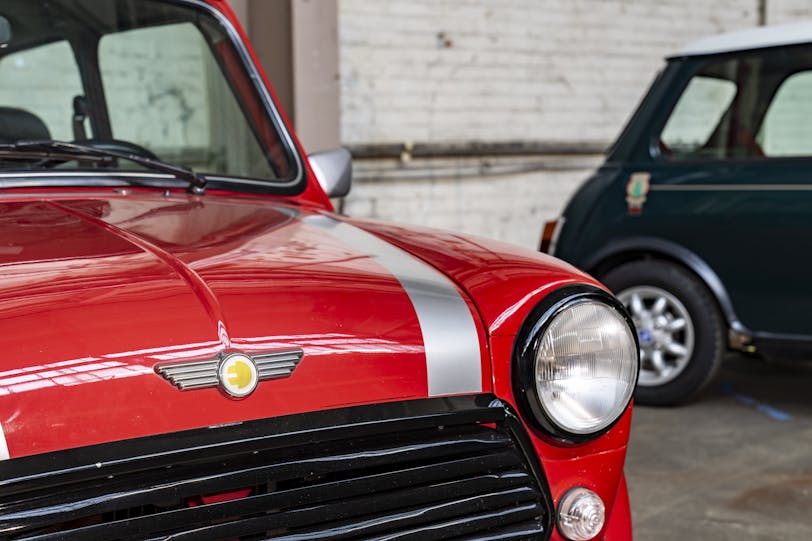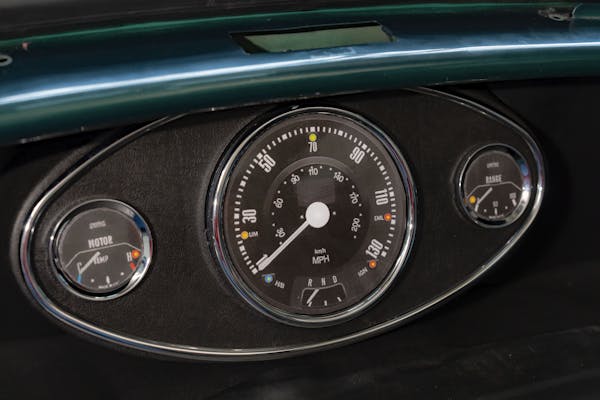Classic Minis Go Electric
The original Mini is arguably the most recognisable car on the planet. Now, Alec Issigonis’ design classic is being futureproofed with the option of an electric motor.
A Brief History of Mini
Launched in 1959, the Mini was designed purely with one question in mind: what’s the most efficient way to carry four occupants and their luggage? The answer was a revolutionary design that saw the Mini produced for over four-decades. It became the best selling British car of all time, with 5 million rolling off the production line.

So, how did they achieve it?
To give occupants as much room inside, the panel seams were on the exterior of the car to free up headroom. Rubber cone suspension was implemented instead of traditional springs. It wasn’t as plush, but gave the car its trademark ‘on-rails’ handling. Each wheel was placed as close to each corner as the design would allow to maximise legroom.
Finally, the engine was mounted transversally (sideways) with the gearbox underneath in the sump. This was to keep the bonnet as short as possible, without eating into passenger space. It was a revolutionary design and is still used by compact FWD cars to this day.
All of Issigonis’ design choices had a tremendous effect inside the car, freeing up 80% of the floor space. However, they also coalesced into creating – rather accidentally – an incredible ‘driver’s car’.
It had such great handling in fact, that it became one of the most successful rally cars of the 1960s. It won 32 rallies around the world between 1960 and 1972. Drivers like Paddy Hopkirk became synonymous with the brand, and cemented the Mini’s reputation as an icon.

Ensuring Timeless Design, Remains In The Future
The MINI Recharged project aims to continue the legacy of the classic Mini by futureproofing its internals. The Oxford-based team allows customers to swap their petrol engines for a modern electric drive. However, the team do stress the importance of retaining the historical heritage of the car.
Every change made to the classic is reversible, too. They will even store the original engine from each Mini for a future retrofit if desired. This allows customers to have the best of both worlds.
They can enjoy the perks of an electric powertrain, nestled safely in the original chassis, with the knowledge they can revert it back to form when desired. Best of all though is the iconic central instrument cluster: it remains in its characteristic layout, but displays drive temp, selected gear, range and speed.
Small Change, Mini Effect
Speaking of, the electric motor continuously generates up to 90kW, propelling the electrified classic from 0-62mph in around 9 seconds. The high-voltage battery has a range just shy of 100 miles, which – for anyone who’s driven a classic Mini long distance knows – is plenty!
From a sustainability perspective, MINI Recharged is a great project. Aside from the obvious emission drop from switching from ICE to electric, the EV conversion is being done without any waste. No new cars are being produced. Instead, existing cars are evolving.
This bespoke upcycling is the future for keeping many classic cars on the road. As fossil fuels are phased out, it would be a shame to see staples of British roads disappear too. Streamline, aerodynamic and futuristic as modern EVs are, classic 20th century stylings from the likes of Alec Issigonis, Battista Farina and Marcello Gandini constitute pieces of automotive history.